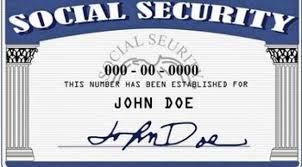
Social Security Cost of Living Increase Equals.... NothingBy MARY KAUFFMAN
October 20, 2015
Cost-Of-Living Adjustments, or COLAs, are tied to inflation and have averaged an increase of about 2.2 percent annually over the last 15 years for Social Security recipients. For the third time since 2009, Social Security recipients won't be getting a cost of living adjustment in 2016.
The Social Security Act specifies a formula for determining each COLA which appears to have become the ultimate barometer of inflation. According to the formula, COLAs are based on increases in the Consumer Price Index for Urban Wage Earners and Clerical Workers (CPI-W). CPI-Ws are calculated on a monthly basis by the Bureau of Labor Statistics. On June 8, 1934, President Franklin D. Roosevelt, in a message to the Congress, announced his intention to provide a program for Social Security. The Social Security Act was signed into law by President Roosevelt on August 14, 1935. In addition to several provisions for general welfare, the new Act created a social insurance program designed to pay retired workers age 65 or older a continuing income after retirement. (President Roosevelt's statement signing the Social Security Act on August 14, 1935.) After Social Security numbers were assigned, the first Federal Insurance Contributions Act (FICA) taxes were collected, beginning in January 1937. Special Trust Funds were created for these dedicated revenues. Benefits were then paid from the money in the Social Security Trust Funds. Over the years, more than $8.7 trillion has been paid into the Trust Funds, and more than $7.4 trillion has been paid out in benefits. The remainder is currently on reserve in the Trust Funds and will be used to pay future benefits. It was not until 1975, that the law provided for automatic annual cost-of-living allowances based on the annual increase in consumer prices. As determined by the Bureau of Labor Statistics, and announced last week, there was no increase in the CPI-W from the third quarter of 2014 to the third quarter of 2015. One of the key elements in determining the CPI is the price of gasoline. Gas prices have been lower lately, thus reducing the CPI overall. Therefore, under existing federal law, there can be no COLA in 2016. For the third time in forty years, there is no COLA increase. The first was in 2009, the second in 2010. In 2014 COLA was 1.7%, which amounts to less than $20 a month for the average recipient. The COLA increase under the intermediate assumptions of the 2015 Trustees Report was an increase of COLA of 3.1%, which is now zero. According to the Social Security Administration, 39.5 million retired workers recieve an average monthly benefit of $1,335 and 9 million disabled workers receive an average monthly benefit of $1,165. Social Security is the major source of income for most of the elderly.
An estimated 165 million workers are covered under Social Security.
For younger workers there is good news. Since there is no COLA, the federal statute also prohibits a change in the maximum amount of earnings subject to the Social Security tax. Th etax rate for an employee will be the same at 7.65%. The 7.65% tax rate is the combined rate for Social Security and Medicare. According to the Social Security Administration, the Department of Health and Human Services has not yet announced Medicare premium changes for 2016. Should there be an increase in the Medicare Part B premium, the law contains a “hold harmless” provision that protects approximately 70 percent of Social Security beneficiaries from paying a higher Part B premium, in order to avoid reducing their net Social Security benefit. Those not protected include higher income beneficiaries subject to an income-adjusted Part B premium and beneficiaries newly entitled to Part B in 2016. In addition, beneficiaries who have their Medicare Part B premiums paid by state medical assistance programs will see no change in their Social Security benefit. The state will be required to pay any Medicare Part B premium increase.
|
|||
